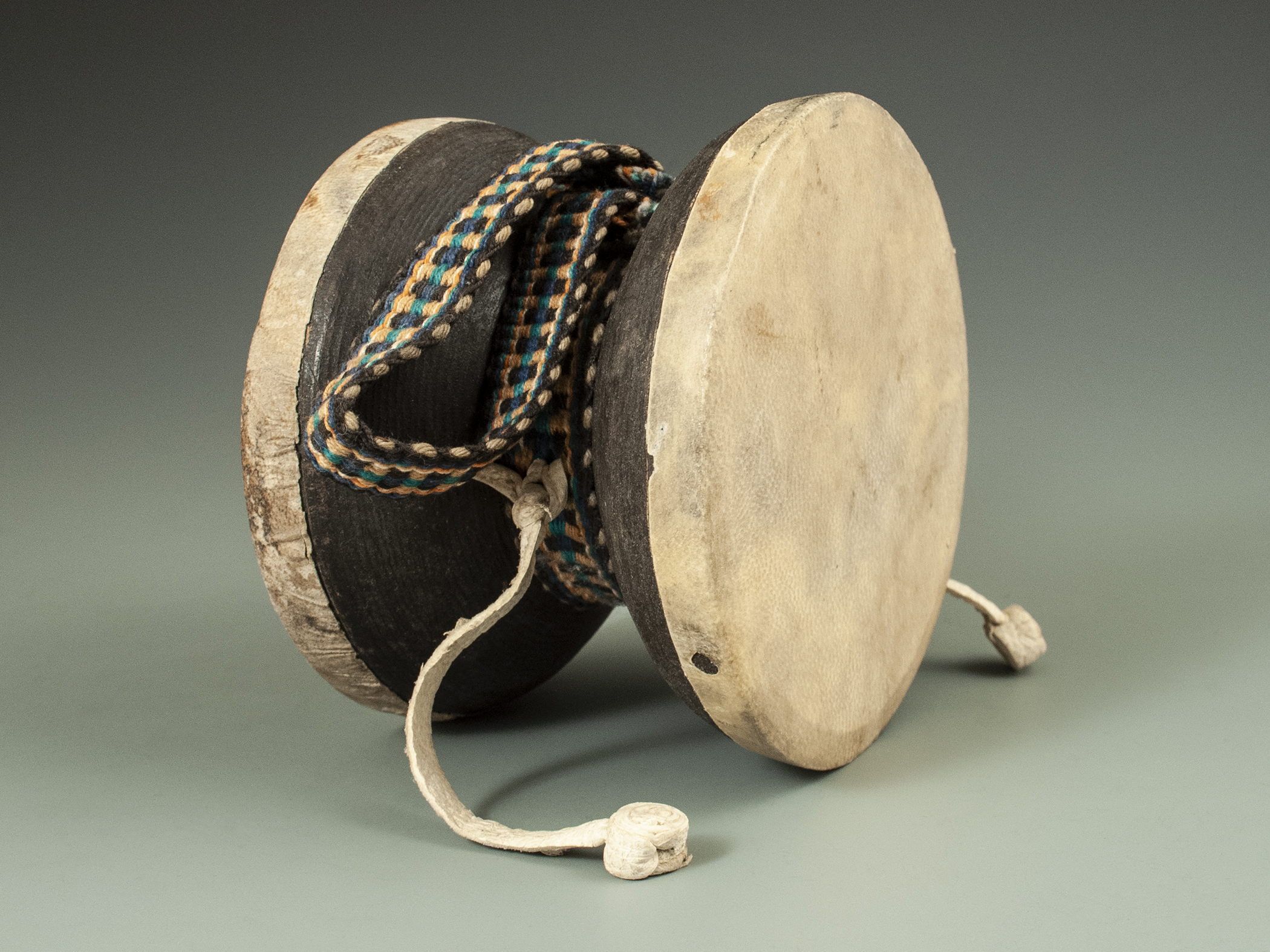Two-Headed Shiva Drum
Damaru, Nepal, 1983

Teri and I met a sadhu, a Hindu holy man, collecting alms in our Kathmandu neighborhood. He wore long dreadlocks and heavy turquoise necklaces, and displayed on his forehead the vertical signs of a Shiva devotee. The mendicant carried a tall iron trident: another potent symbol of Hindu pantheon’s snake-charming, ganja-smoking Creator/Destroyer.
The sadhu’s manner was friendly, and after a short chat we invited him to our flat at the Chhetrapati Guest House.
The sadhu entered our cluttered room, looked around, and immediately pointed, with the focus of a bloodhound, to the corner. We followed his finger but saw nothing; just a small round table cluttered with supplies for our upcoming trek. Teri looked puzzled. I shook my head; there was nothing on the table we could spare.
“That! That!” He wagged his finger up and down, almost shouting.
Teri lit up. “He wants a flower!” she exclaimed brightly. Indeed, there was a small brass vase of flowers on the table. Teri plucked one out and, smiling sweetly, offered it to the sadhu. He threw it to the floor. “No! There!”
Aha. There was a bottle of Johnnie Walker on the table—a precious, duty-free commodity in the Kathmandu of yore. The sadhu wanted whiskey.
“No,” I said. “No whiskey. I’ll make us some tea.”
The sadhu muttered angrily, grabbed his trident, and stormed out of the room. Teri and I looked at each other. We shrugged; then we laughed. I got up to use the shared bathroom, just down the hall.
The sadhu was standing on the closed toilet lid, urinating all over the walls and floor. In panic and amazement I yelled for the manager, who kicked the holy man out and— furious with me for inviting the sadhu in the first place—hosed down the fouled bathroom.
When I next saw the sadhu, he greeted me with a wave. He may have been satisfied, all things considered, to have taught me a lesson: When in Asia, play by Asia’s rules. If you plan to hang out with an acolyte of Shiva, the ultimate stoner, Lipton’s won’t cut it.
